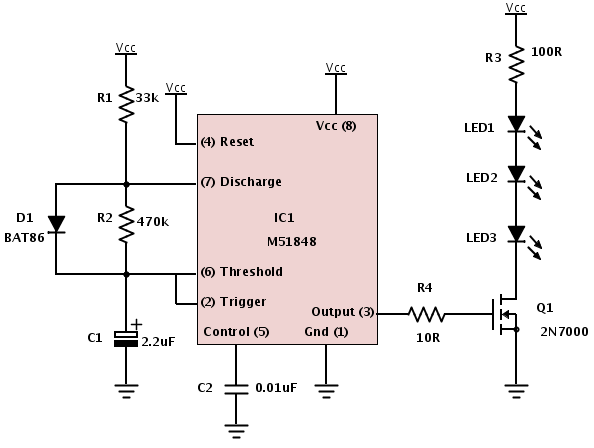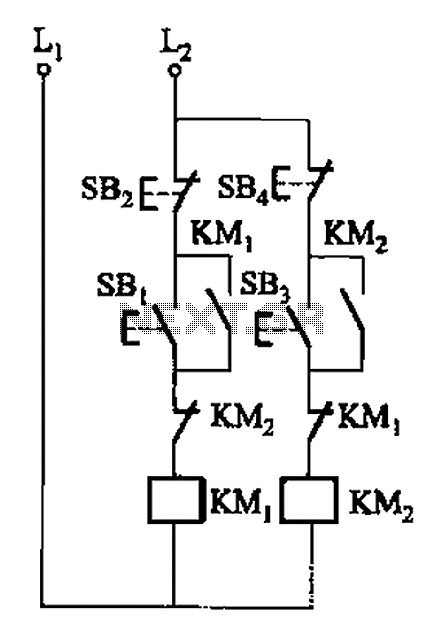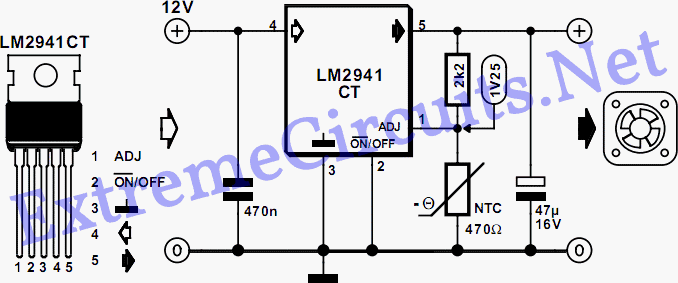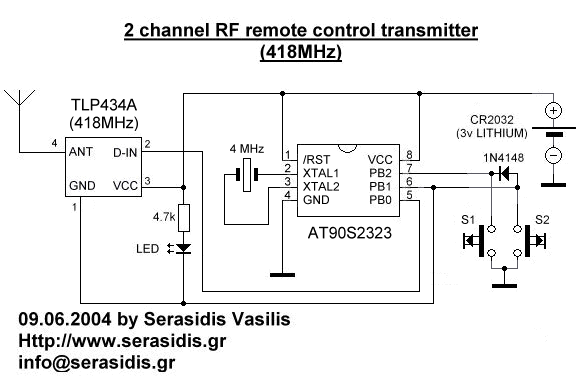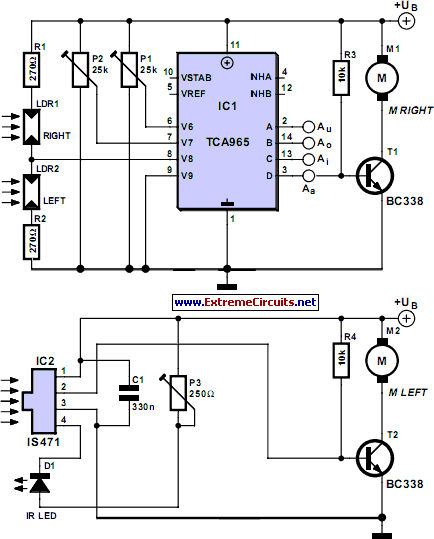
Stepper Motor Controller Schematic
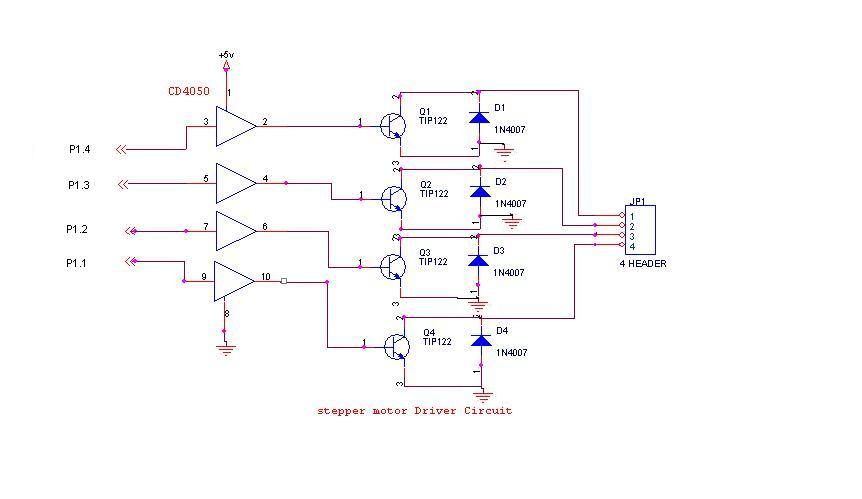
A 6V, 2A stepper motor is utilized in this circuit. The CD4050 hex buffer is employed to connect to the microcontroller. The output of the CD4050 is linked to the base of a TIP122 transistor. The emitter and collector of the TIP122 are connected to a 1N4007 diode, while the collector of the TIP122 is connected to the stepper motor coil. This demonstration employs a unipolar stepper motor with six wires, color-coded as follows: Black for coil 1, Red for coil 2, Green for coil 3, Yellow for coil 4, and two white wires connected to provide a 6V input supply voltage. The code provided includes a delay function and a rotation function to control the stepper motor.
The circuit described operates a unipolar stepper motor using a 6V power supply and a microcontroller interfaced through a CD4050 hex buffer. The CD4050 serves to buffer the microcontroller's output signals, ensuring adequate drive capability for the TIP122 transistor, which functions as a switch to control the motor coils.
The TIP122, a Darlington pair transistor, is used to handle the higher current required by the stepper motor. The connection of the emitter and collector to a 1N4007 diode is crucial for flyback protection, preventing voltage spikes generated when the motor coils are de-energized from damaging the transistor or the microcontroller.
The stepper motor in use is a unipolar type, which typically has six wires: four for the coils and two for the common connection to the power supply. The color coding indicates the function of each wire, facilitating correct connections. The motor's operation is controlled through a series of signals sent from the microcontroller, which are defined in the provided code snippets.
The code includes a `rotate` function that sequentially energizes the coils of the stepper motor to achieve rotation. The `delay` function introduces a timing mechanism to control the speed of rotation. The loop in the `main` function continuously calls the `rotate` function, allowing for ongoing operation of the stepper motor.
In summary, this circuit effectively demonstrates the control of a unipolar stepper motor using a microcontroller, a hex buffer, and a transistor, showcasing fundamental principles of motor control in electronic design.We are using 6v/2amps 1. 8degree stepper motor. In this circuit CD4050 hex buffer using to connect to the microcontroller. The output of cd4050 is connected to the TIP122 of the BASE. The Emitter and collecter is conneted to 1N4007 diode the colleter of tip122 is connected to the stepper motor coil. In this demo we are using Uni polar Stepper motor using 6wires, the color coding of the stepper motors
are Black coil 1, Red coil 2, Green coil 3, Yellow coil 4 and 2 white are connected to give 6V input supply voltage. #include "reg51. h" void delay(unsigned int y); void rotate() { P1=0x09; delay(30); P1=0x05; delay(30); P1=0x06; delay(30); P1=0x0a; delay(30); } void delay(unsigned int y) { int i, j; //delay subroutine for(i=0;i<=y;i+) for(j=0;j<=498;j+); } void main() { while(1) { rotate(); } }
🔗 External reference
The circuit described operates a unipolar stepper motor using a 6V power supply and a microcontroller interfaced through a CD4050 hex buffer. The CD4050 serves to buffer the microcontroller's output signals, ensuring adequate drive capability for the TIP122 transistor, which functions as a switch to control the motor coils.
The TIP122, a Darlington pair transistor, is used to handle the higher current required by the stepper motor. The connection of the emitter and collector to a 1N4007 diode is crucial for flyback protection, preventing voltage spikes generated when the motor coils are de-energized from damaging the transistor or the microcontroller.
The stepper motor in use is a unipolar type, which typically has six wires: four for the coils and two for the common connection to the power supply. The color coding indicates the function of each wire, facilitating correct connections. The motor's operation is controlled through a series of signals sent from the microcontroller, which are defined in the provided code snippets.
The code includes a `rotate` function that sequentially energizes the coils of the stepper motor to achieve rotation. The `delay` function introduces a timing mechanism to control the speed of rotation. The loop in the `main` function continuously calls the `rotate` function, allowing for ongoing operation of the stepper motor.
In summary, this circuit effectively demonstrates the control of a unipolar stepper motor using a microcontroller, a hex buffer, and a transistor, showcasing fundamental principles of motor control in electronic design.We are using 6v/2amps 1. 8degree stepper motor. In this circuit CD4050 hex buffer using to connect to the microcontroller. The output of cd4050 is connected to the TIP122 of the BASE. The Emitter and collecter is conneted to 1N4007 diode the colleter of tip122 is connected to the stepper motor coil. In this demo we are using Uni polar Stepper motor using 6wires, the color coding of the stepper motors
are Black coil 1, Red coil 2, Green coil 3, Yellow coil 4 and 2 white are connected to give 6V input supply voltage. #include "reg51. h" void delay(unsigned int y); void rotate() { P1=0x09; delay(30); P1=0x05; delay(30); P1=0x06; delay(30); P1=0x0a; delay(30); } void delay(unsigned int y) { int i, j; //delay subroutine for(i=0;i<=y;i+) for(j=0;j<=498;j+); } void main() { while(1) { rotate(); } }
🔗 External reference
